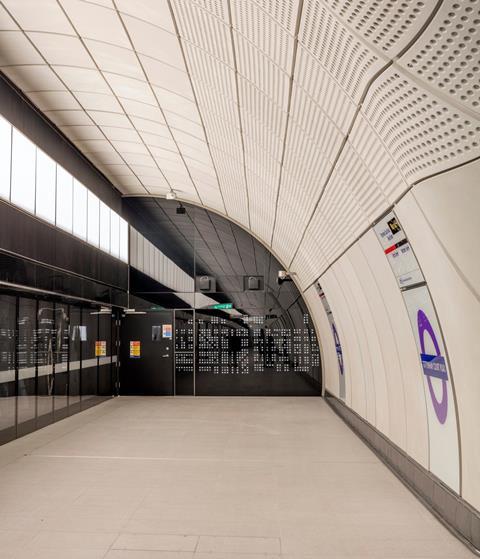Investment in human-centric public transport is a priority today if we are to create the truly civic cities of tomorrow, writes Neill McClements

The opening of the Elizabeth Line was an incredible reminder of how public transport makes the way we live possible. It connects communities, is a catalyst for local and national economies, and can improve the lifestyles of thousands of people through enabling active healthy travel.
However, despite the well-documented impact of infrastructure investment, the pandemic put this kind of progress on hold and exposed underlying behaviours that were distinctly not civic. Communities became disconnected, parts of the economy were broken or lost overnight, and once solid social structures struggled to cope.
With these challenges exposed, our path to more sustainable, resilient and regenerative cities, of which public transport is intrinsic, has been stunted. What is evident now, is that future plans for public transport have to be more ambitious. If we want to realise the power of their civic impact and achieve their full potential for creating sustainable cities in the 21st century, they need to be of higher quality, and more human-centric than ever.
Make social value the primary objective, not just an outcome

We frequently hear transport projects being sold on their engineering merits in terms of “faster journeys” or “increased capacity”, but this underplays their wider societal benefits. Good transport networks link people to education, employment, healthcare, and housing, and the Elizabeth Line has done just that. Long before “levelling up” became a government priority, the Elizabeth Line was already in the making.
Transport infrastructure can create jobs, improve local air quality and the urban environment. It can also remove barriers to social inclusion and ultimately improve the health and well-being of communities. Put simply, better connectivity can help to enable prosperity.
A well designed transport system has a further role to play in delivering social equity. It incentivises active travel, helps shape inclusive environments, fosters more integrated local identities and offers safe, comfortable and accessible spaces.
These outcomes are often amongst the primary ambitions for commissioning an infrastructure project, but they are not always clearly communicated throughout the project lifecycle. If these aspirations were placed front and centre of transport infrastructure planning from the very beginning, then the objectives can be set even higher, delivering even better outcomes for people and communities.
Capitalise on the economic potential that connectivity will bring
If we are to realise these wider societal benefits then we must also harness the economic potential that improved connectivity brings. This means capitalising on innovative funding mechanisms that take pressure off already cash-strapped governments, and make public money go further.
A less talked about aspect of the Elizabeth Lline and Northern Line Extension is the financing models that funded them. On the Northern Line Extension, the cost of construction was funded by a government loan with borrowing paid back through incremental business rates from within the local Enterprise Zone, combined with developer contributions through section 106 agreements.
Similarly, the Elizabeth Line adopted an innovative funding model which saw contributions from local businesses combined with future passenger revenues making up approximately two thirds of the construction costs. The financing, funding and value capture models for these projects offer a lesson in how to deliver infrastructure that at once unites a community in pride and reduces the burden on taxpayers.
This is about funding models that benefit the community, but do not leave it burdened with debt. Without these alternative funding models, critical civic infrastructure projects may never see the light of day.
Design transport around people - humanise the journey

If, as the UN World Cities Report 2022 concludes, ”cities are here to stay, and the future of humanity is undoubtedly urban”, then the transport infrastructure that supports cities must equally be humanised. This means taking responsibility for creating places that acknowledge, and put a focus on, experience: creating public transport that passengers look forward to travelling on rather than dread.
Of course, there is no silver bullet solution for this - our individual responses to travel are so complex and subjective. But how we design our public transport systems to make travel safer, more accessible, and enjoyable, is critical to their success.
As reported on the Elizabeth Line’s opening day, the project’s ”carefully considered public architecture” has this approach at its heart. The double height tunnels gave the opportunity for generous welcoming spaces that allow for the fluid movement of passengers.
In a more subtle manner, the combination of intuitive wayfinding and human-centred lighting design instils travellers with a sense of calm that is in stark contrast with many metro environments. The Elizabeth Line has also shown how the integration of public art can take this experience-centred design a step further with transitory station concourses transformed into places to pause and reflect on the cycles of our daily lives.
Taking transport beyond A to B
It’s evident that transport systems have the capacity to connect people, create economic opportunity and lift our experience of travel. There are already proven mechanisms and approaches which can help ensure that this potential is fulfilled. These include social value monitoring, sophisticated funding models for public and private sector benefit, and experiential design which takes transport beyond just connecting A to B.
The closer we get to realising this responsibility, the more resilient, equitable, and sustainable our cities will become. “Transport is not an end in itself, but rather a means of allowing people to access what they need: jobs, markets, social interaction, education, and a full range of other services and amenities contributing to healthy and fulfilled lives.”
Postscript
Neill McClements is a partner at Grimshaw
















No comments yet